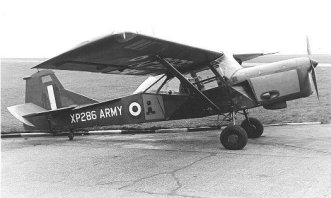
Home »
USA » Taylorcraft Auster Series
Taylorcraft Auster Series
Originally designed pre-war in the USA as lightplanes for the growing civilian private pilot market, the Auster series provided some of Britain's most important light observation aircraft of World War II. Although the Auster was slow and appeared old fasioned, it was an ideal mount for artillery spotting and provided the pilots with an excellent field of view. It was also agile enough to dodge enemy fighters and operate from tiny grass airstrips.
Following on from the success of the Taylorcraft series of lightplanes in the USA, licence production was established at Thurmaston in Leicestershire, under the name of Taylorcraft Aeroplanes (England) Ltd.
Several civilian variants were produced and with the outbreak of World War II these were evaluated for the airborne observation role. The Taylorcraft Plus C was selected for production under the military designation Auster Mk I.
The suitability of the aircraft was quickly appreciated and the design was developed into the Mk III. Powered by a 97-kW Gipsy Major I engine, 470 of this version were produced.
Next major production variant was the Mk IV which was fitted with an American Lycoming O-290 engine and had a larger cabin to accommodate a third seat. The most common wartime Auster was the Mk V, which introduced blind-flying instrumentation and other improvements. About 800 of this variant were built.
Auster series aircraft gave invaluable service in North Afrika and later in the war in southern and northern Europe. At their peak, Austers equipped 19 squadrons, often using their remarkable short-field performance to operate very close to the front line.
 |
 |
| Looking externally very similar to the Cirrus Minor-powered Auster Mk I, the Mark III variant differed in being fitted with a 97-kW (130 hp) Gipsy Major. This was one of the most widely produced of the early Auster variants with 470 examples built. |
Inside, the Auster Mk IV variant was spartan to say the least. The flying controls were mounted on the left side. This example carries a wireless system in place of the right-hand seat. |
|
Taylorcraft Auster Series (Technical Specification) |
| Role |
Light liaison and observation/reconnaissance aircraft |
| Manufacturer |
Taylorcraft |
| Maximum Speed |
209 kmh (130 mph) |
| Maximum Range |
402 km (250 miles) |
| Ceiling |
5,639 meters (18,500 feet) |
Weight
Empty
Maximum Takeoff |
499 kg (1,098 lbs)
839 kg (1,846 lbs) |
Dimensions
Wingspan
Length
Height
Wing Area |
10.97 meters (36 ft)
6.83 meters (22 ft 5 in)
2.44 meters (8 ft)
15.51 square meters (167 sq ft) |
| Engines |
One Lycoming O-290-3 horizontally opposed four-cylinder engine which provides 97-kW (130 hp) |
| Accommodation |
One pilot and observer sitting side by side |
Photo Gallery
Click here to submit your photo
| Have A Passion For Aircraft? |
Subscribe to our 14 series FREE newsletter
delivered weekly on World War 2 Aircraft factfile... |
| NB:- We hate spam as much as you do, so your email address will NEVER be shared with or sold to anyone else. That's a Guarantee. |
|
|




